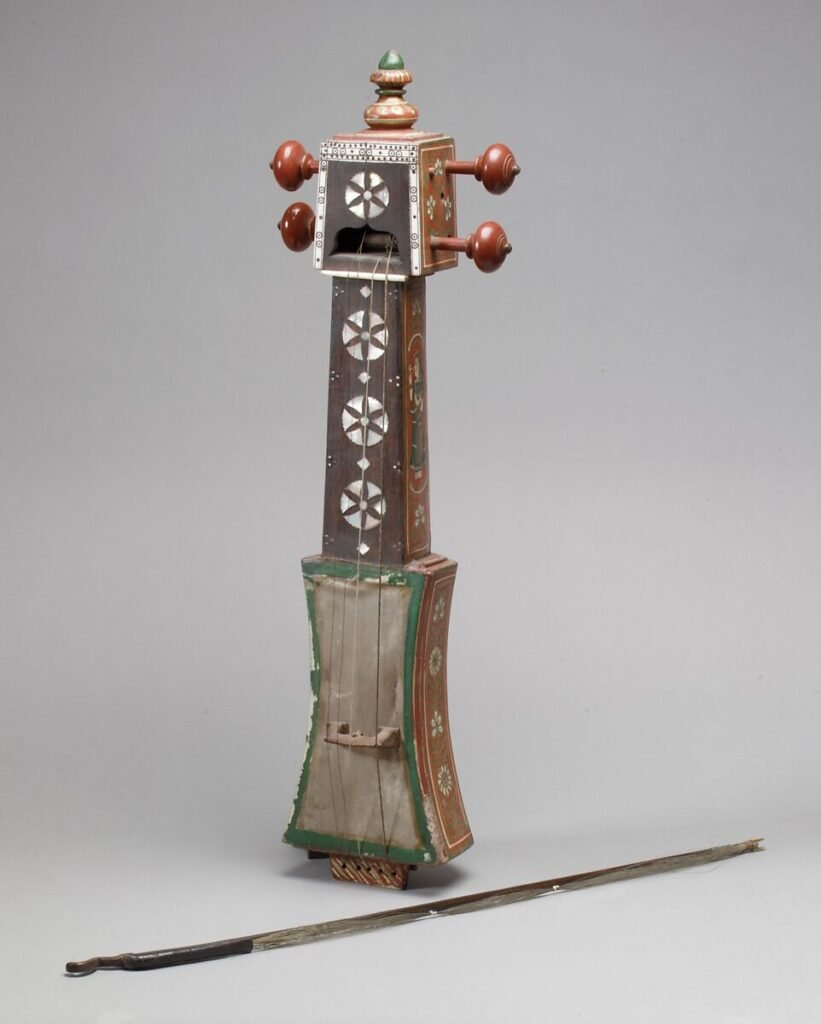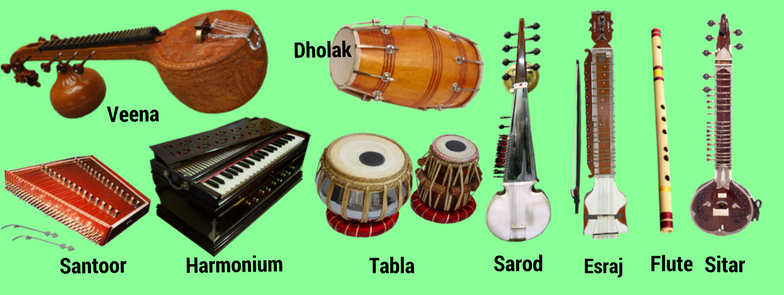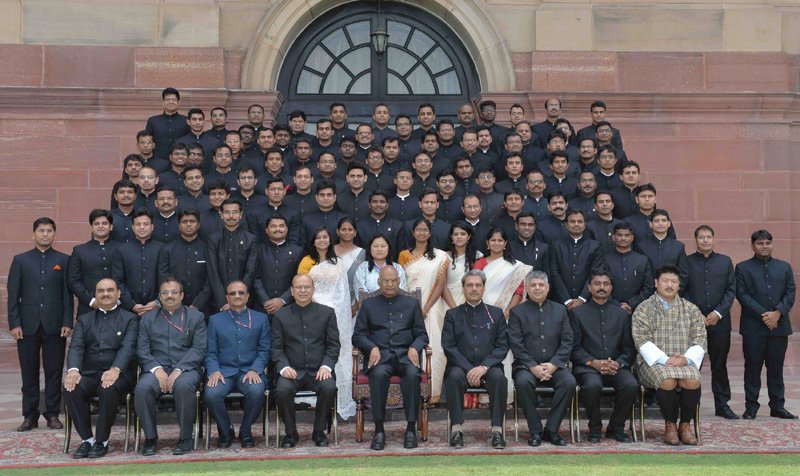The instruments used in Indian classical music are crucial in producing its unique tone, which is well known for its vast melodic and rhythmic history. From ancient temples to royal courts, Indian classical instruments have evolved over centuries, contributing to both Hindustani and Carnatic music traditions. These devices represent culture, spirituality, and art; they are more than just tools for performance.
String Instruments
String instruments are central to Indian classical music, offering melodic depth and expressive nuance.
- Sitar: A prominent instrument in Hindustani music, the sitar has a long neck with sympathetic strings, producing resonant and intricate tones. It gained global popularity through artists like Ravi Shankar.
- Veena: Integral to Carnatic music, the veena has a wide body and multiple strings, allowing for intricate ornamentation and devotional melodies.
- Sarod: Known for its deep, soulful sound, the sarod is a fretless string instrument commonly used in Hindustani music.
- Tanpura: Though not used for melody, the tanpura provides a continuous drone, establishing the tonal framework for both Hindustani and Carnatic performances.
Percussion Instruments
The heartbeat of Indian classical music is its rhythm, and percussion instruments provide the tempo and dynamic force.
- Tabla: A pair of drums used in Hindustani music, the tabla is known for its complex rhythmic patterns and improvisation.
- Mridangam: Central to Carnatic music, the mridangam is a double-headed drum providing intricate rhythmic support for both vocal and instrumental performances.
- Pakhawaj: Predecessor to the tabla, this barrel-shaped drum is used in traditional Hindustani and devotional compositions.

Wind Instruments
Wind instruments add melodic color and emotional expression to Indian classical music.
- Bansuri: A bamboo flute prominent in Hindustani music, the bansuri produces soft, soulful melodies often associated with Lord Krishna.
- Shehnai: Traditionally used in ceremonies, the shehnai has a piercing yet melodic sound that enhances festive and devotional music.
Modern Influence and Global Recognition
Indian classical instruments have inspired global music fusion, jazz, and contemporary compositions. Artists like L. Subramaniam, Shivkumar Sharma, and Hariprasad Chaurasia have brought these instruments to international audiences, highlighting their timeless charm and versatility.
Indian classical music instruments are more than musical tools—they are cultural treasures. Each instrument, from the resonant sitar to the intricate mridangam, contributes to the rich tapestry of India’s musical heritage. Together, they preserve centuries-old traditions, express profound emotion, and continue to captivate audiences worldwide.
![]()





